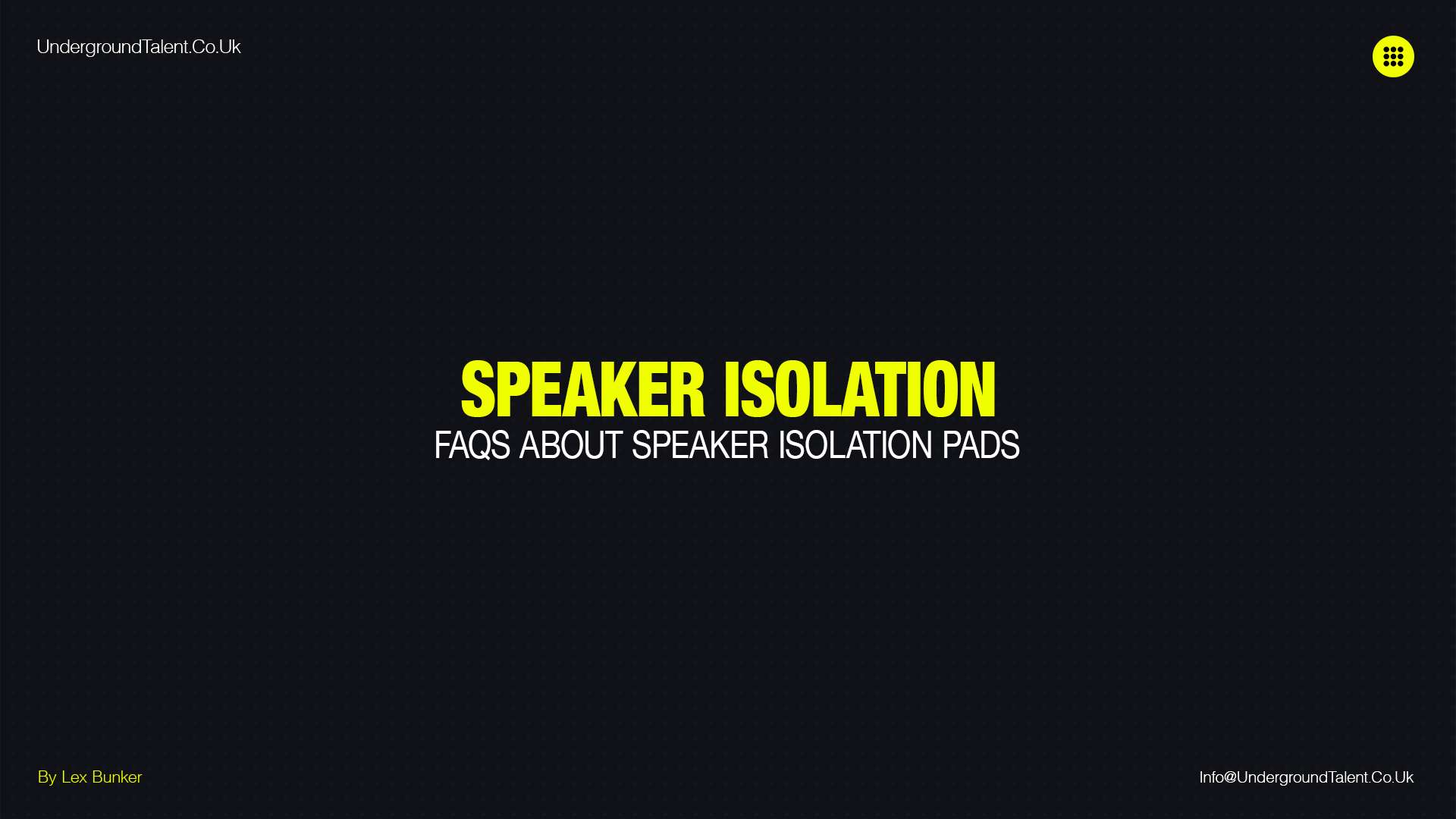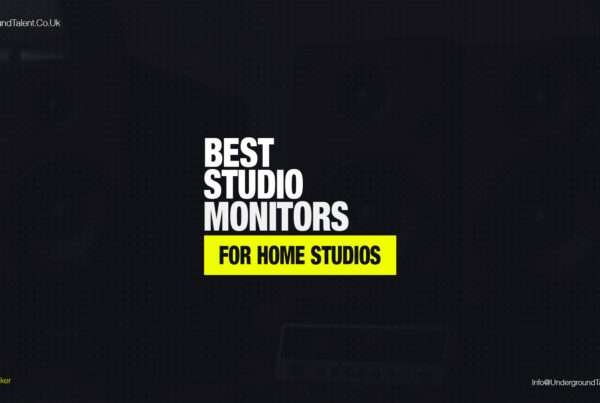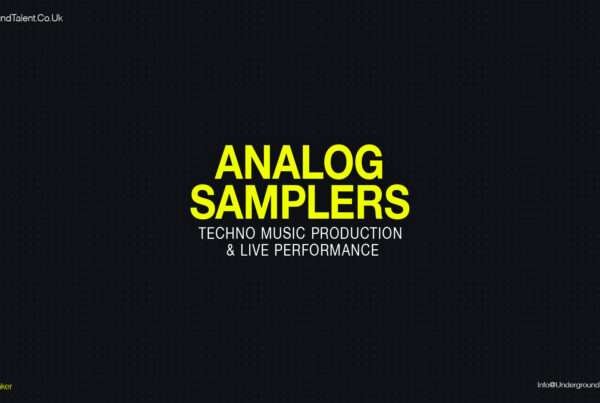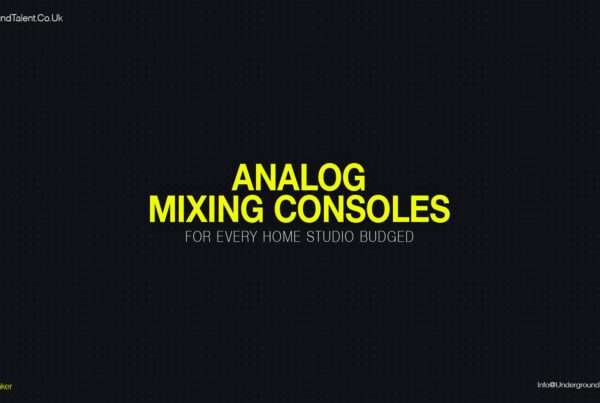Frequently Asked Questions About Speaker Isolation Pads: Introduction
Speaker isolation pads are essential for anyone looking to enhance their sound system.
These pads help reduce vibrations that can blur sound quality, making them a must-have for both home theatres and recording studios. They stabilize speakers, ensuring clearer and more precise audio. Whether you’re a professional mixing music or a hobbyist enjoying movies at home, these accessories can significantly improve your audio experience.
By absorbing unwanted noise, they prevent sound colouration and keep your setup sounding its best. Moreover, they are easy to integrate into any audio system, from subwoofers to standard speakers.
This article answers all your questions about speaker isolation pads, including their benefits, DIY options, and how they compare to other sound-enhancing tools.

What are speaker isolation pads?
Speaker isolation pads are designed to improve your audio experience by reducing unwanted vibrations.
Placed under speakers, these pads help stabilize the audio output. This stabilization prevents vibrations from muddying the sound, which can degrade sound quality.
Whether you’re using speakers for music, movies, or mixing tracks in a studio, these pads ensure clearer and more accurate sound. They are especially useful on surfaces that are prone to vibration, like wooden floors or desks.
By dampening these vibrations, speaker isolation pads help maintain sound clarity and integrity. This makes them a vital accessory for anyone serious about high-quality audio. Their simple use and significant impact on sound quality make them a popular choice among audio enthusiasts.
What do speaker isolation pads do?
Speaker isolation pads serve a critical role in enhancing audio by isolating speakers from surface vibrations. These pads are placed under speakers to prevent vibrations from muddling the sound. It will occur on various surfaces such as wood, metal, or glass.
By doing so, the pads ensure that sound clarity is preserved and that there is no colouration of the audio output. This is particularly important in settings where audio quality is paramount, such as in recording studios or home theatres.
The pads work by absorbing the vibrations that would otherwise transfer from the speaker to the surface and back, thereby preventing any potential distortion or muddying of sound.
This not only improves the listener’s experience but also protects the integrity of the audio in professional and casual environments alike. Using isolation pads is an effective way to achieve clean, clear, and precise sound quality.
Are speaker isolation pads necessary?
Speaker isolation pads are vital in settings where sound clarity is a priority.
They excel on surfaces that easily transmit vibrations, like wooden floors or glass desks. These pads stabilize the audio output from various speaker types, from subwoofers to bookshelf models.
They are particularly useful in environments where maintaining sound integrity is crucial. While not necessary for every setup, they play a key role in optimizing audio performance where it counts.
Do I need speaker isolation pads for my home studio?
To decide if you need speaker isolation pads in your home studio, examine your acoustic setting.
Hard surfaces like concrete or glass can distort sound, making pads useful. They reduce surface vibrations, ensuring truer sound for accurate recording and mixing.
If clear and precise audio is your aim, consider using isolation pads for your speakers.
Pads vs spikes: What’s the difference?
Speaker isolation pads and spikes both improve audio quality, but they do so differently.
Pads absorb vibrations between the speaker and its surface, enhancing clarity by reducing muddiness.
They work well on resonant surfaces like wood. Spikes reduce the contact area between the speaker and the surface, which minimizes sound transmission. This is useful on carpeted floors or where minimizing vibration transmission is crucial.
Depending on your floor type and acoustic environment, choosing between pads and spikes can significantly affect sound quality.
Pads vs stands: Which is better?
Isolation pads and stands both enhance speaker performance, but their benefits differ.
Pads minimize vibrations directly under the speakers, improving sound clarity by absorbing unwanted noise.
This makes them ideal for unstable surfaces or where clarity is key. Stands position speakers at optimal heights and can include built-in dampeners, which help in open or uneven spaces.
Your choice should depend on your room’s acoustics and the specific needs of your setup.
Isolation pads for speaker stands: Are they necessary?
Isolation pads for speaker stands can be crucial in fine-tuning sound quality.
They are most effective in environments where external vibrations may disrupt speaker performance.
By adding these pads, you can prevent vibrations from travelling up the stand, thus preserving the purity of the sound.
They are especially useful in lively rooms or on floors that carry sound.
How do speaker isolation pads compare to other vibration-damping methods?
Pads are just one way to dampen vibrations.
Compared to alternatives like decoupling devices or acoustic foams, pads directly absorb vibrations under the speakers.
This prevents sound colouration from surface interactions.
Other methods, like decouplers, separate the speaker from its base, targeting broader vibrational issues. Each method has its strengths, and the best choice depends on your specific acoustic challenges and budget.
Can DIY pads work as well as commercial products?
DIY pads can be nearly as effective as commercial options if made correctly.
These homemade pads often use common materials like foam or rubber, which can still significantly reduce vibrations.
The key is to ensure the material is dense enough to absorb unwanted noise and vibrations.
For audiophiles on a budget, DIY pads provide a cost-effective alternative to enhance sound quality without the expense of high-end products.
How to make speaker isolation pads?
To create effective DIY speaker isolation pads, you’ll need dense foam, rubber, or cork.
First, measure your speakers’ base to cut the material to size. Use sharp scissors for foam or a utility knife for cork and rubber. Ensure each pad is evenly cut to avoid wobbles.
Place one pad under each corner of your speaker.
This simple project can improve your audio setup by reducing vibrations and enhancing sound clarity.
What are the best speaker isolation pads available in the UK?
In the UK, several top-rated speaker isolation pads stand out for their quality and effectiveness.
Brands like Auralex and Sound Addicted offer pads that fit a range of speaker sizes and types. Auralex Acoustics MoPADs and Sound Addicted’s Studio Monitor Pads are highly praised for reducing resonance and improving sound clarity.
These products are readily available through local audio equipment stores or online retailers like Amazon UK or Thomann, providing accessible options for enhancing your listening experience.
Are speaker isolation pads worth it?
Investing in speaker isolation pads is often worthwhile for both amateurs and professionals.
The cost of these pads is relatively low compared to the significant improvement they bring to sound quality. They reduce vibrations that can muddy audio output, making them essential in settings where clarity is crucial.
For serious audiophiles or recording professionals, these pads ensure that sound is accurate and uncoloured by external vibrations, which is vital for high-quality recordings and enjoyable listening experiences.
Speaker isolation feet review: Are they a good alternative to pads?
Speaker isolation feet are a viable alternative to pads, especially in scenarios where minimal contact with the surface is desired.
These feet elevate the speakers slightly off the ground, minimizing the area of contact and thus reducing potential vibration transfer more effectively than some thicker pads.
They are particularly suitable for heavier speakers on soft surfaces, where they can prevent sinking and maintain stability better than pads.
Speaker isolation pads review: What are users saying?
User reviews of speaker isolation pads generally highlight significant improvements in sound clarity and bass response.
Many users appreciate how simple pads can isolate and enhance the performance of both high-end and budget speakers.
Feedback often mentions that the installation is straightforward and the impact on audio quality is immediately noticeable, making them a popular choice among both casual listeners and professional audio engineers.
What is a speaker L-pad and how does it relate to isolation?
A speaker L-pad is a type of resistor network used to adjust the volume of speakers without changing the impedance seen by the amplifier.
It’s different from isolation techniques as it focuses on controlling audio levels rather than minimizing vibrations.
However, using an L-pad can indirectly aid isolation by allowing speakers to operate at optimal volumes, thereby reducing the strain and potential for vibration-induced distortions at high volumes.
It’s a complementary component to isolation pads in a comprehensive audio setup.
Conclusion
In conclusion, choosing the right speaker isolation pads for your home studio is a critical decision. It will significantly enhance your audio experience.
Whether you are recording, mixing, or just enjoying your favourite music, these pads ensure that your speakers perform at their best by minimizing unwanted vibrations and maintaining sound clarity. They are a small investment that can make a big difference in sound quality.
Don’t let poor acoustics compromise your audio projects or listening pleasure.
Take action now to achieve the pristine sound you deserve. Explore the best speaker isolation pads available, and equip your home studio with the tools it needs to produce clear, high-quality audio.
Check out our comprehensive guide and top picks for “Best Speaker Isolation Pads for Home Studio” to find the perfect match for your audio setup. Elevate your sound experience today!
Additional Resources
- Speaker Isolation: Essential Guide to Studio Monitor Isolation
- Room Acoustics: Understanding Sound Waves and Reflections
- Room Acoustics: How to Setup Your Room?
Here are some additional resources you might find helpful:
- Monitor Isolation Pads: The Ultimate Buyer’s Guide: Discusses different features to consider when buying isolation pads.
Producing Techno? Get Your Free Sample Packs.
Dive into electronic music production with our newly released “Free Techno Tools V1” and “Free Techno Tools V2” sample packs. These packs are full of high-quality sounds that will add a professional touch to your tracks. If you’re looking to expand your sound library, these free sample packs are perfect for every techno enthusiast. Click on the links below to access these fantastic resources and elevate your production game today!
Enhance Your Productions
Discover more ways to improve your sound:
- Loops: Improve Your Sound Quality Using Sample Packs
- Dexed: Free FM Synth VST by Digital Suburban
- How to Install VST Plugins on Your Computer Successfully
More Techno? Connect With Us.
Join our vibrant community for more wisdom and updates:
And Always Remember…
Have Fun & Be Creative!




